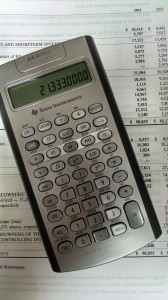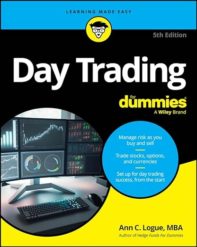 A while back, I interviewed a man who has degrees in both physics and economics, who taught economics for years and years, and who has great accomplishments in econometrics, the most quantitative branch of the field. Anyway, among other things, he mentioned a book that had been given to him in high school that he used to more or less teach himself calculus. He said that it was great and that he had given it to many other people over the years.
A while back, I interviewed a man who has degrees in both physics and economics, who taught economics for years and years, and who has great accomplishments in econometrics, the most quantitative branch of the field. Anyway, among other things, he mentioned a book that had been given to him in high school that he used to more or less teach himself calculus. He said that it was great and that he had given it to many other people over the years.
The book is called Calculus Made Easy, by Silvanus P. Thompson. The book is now in the public domain, but calculus hasn’t changed as much over the years as, say, economics. It is available on Project Gutenberg, and if you are one of the zillions of people who has struggled with calculus, or if you know someone who is, download it now!
I’ve been revisiting calculus as I work on The Complete Idiot’s Guide to Options Trading, because the Greeks used in options trading are mostly derived from calculus.
Think of it this way – the difference between 1 and 2 is 1. In percentage terms, it is 100%. The difference between 2 and 3 is also 1, but in percentage terms, it’s 50%. The difference between 3 and 4 is also one, but the percentage change is now just 33%. The amount by which the numbers change from 1 to 2, 2 to 3, and 3 to 4 is the same, but the rate at which they change is different.
That’s the delta. To an options trader, delta is the relationship between the price of the underlying and the premium of the option. If the premium goes up 100% for every dollar that the underlying increases, then the delta is 1.00. If the premium goes up 50% for each dollar increase in the underlying, then the delta is 0.50.
But then there’s the second derivative, known as gamma in to options traders.Gamma is the rate of the rate of change.
But what does that mean? Well, go back to the explanation for delta. When the numbers change from 1 to 2, 2 to 3, and 3 to 4, they change by 1. The rate of change – the delta – differs; it is 100%, 50%, and 33% as you move along the line. In other words, delta is the rate of change of the numbers.
Now, the difference between the rate of change from 100% to 50% is 50%, and the rate of change from 50% to 33% is 34%. That rate of change of the rate of change (whew!) is the gamma.
Delta tells you how much an option moves, and gamma tells you how fast it is moving. How’s that for today’s calculus lesson? Questions and comments are welcome!



